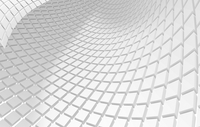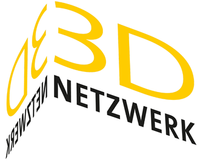Digital Light Processing (DLP)
Digital light processing (DLP) was developed by Larry Hornbeck in 1987, for projectors and cinemas. Now the technology has been developed and adapted in 3D printing. DLP belongs to the family of the vat polymerization process. In the vat polymerization family, there are two main technologies: Stereolithography (SLA) and Digital Light Processing (DLP).
Working principle of DLPIn DLP, a light projector is used to cure the photopolymer resin in the vat. The light source projects the image of the layer on the surface of the resin and cures the selected area according to the model, leaving surrounding areas uncured. The patterning of the light is very critical in DLP to get the desired shape of the product. This is achieved by a digital micrometer device (DMD) placed in between the optical path of the light source and the resin which creates a “mask”. The DMD is composed of rotating micro size mirrors that direct the light into or away from the resin. This allows the polymerization of the resin at different locations in the layer. The projector cures one layer at a time, and once the layer is fully printed the part is pulled out of the vat by the distance of layer height. The process is repeated, and the part is printed layer by layer until it is fully printed. Once the part is fully printed, the support structures if any should be removed and the part should be cleaned of any unused resin. Additional processes such as priming, painting can be later used to improve the aesthetics of the 3D printed part.
Stereolithography (SLA) vs. Digital Light Processing (DLP)
DLP is very similar to Stereolithography (SLA) as both use liquid photopolymer resins and light source for producing the parts. The fundamental difference is the SLA process uses a single-point UV laser to cure the photopolymer resin, whereas the DLP process uses a digital light projector. The light projector is used to flash an image of each layer at once on the surface of the photopolymer resin, curing the layer at once. On the other hand, in SLA, the single-point UV laser scans the selected area and traces it point-by-point. Therefore, it takes longer to fabricate the part using SLA as compared to DLP. Furthermore, as compared to SLA, DLP uses a shallow vat of resin resulting in less wastage.
Materials and applications
The resins available for DLP are very similar to those used in SLA. DLP allows the use of a wide range of resins with diverse physical properties based on end applications. The resins can also be filled with secondary materials such as glass or ceramics. The resin models are most commonly used in sectors such as dentistry, jewelry, and medical (for hearing aids).
Advantages of DLP
• Very intricate designs and high accuracy compared to SLA and FDM.
• Good print speed: faster compared to SLA.
Disadvantages of DLP
• UV sensitive.
• More expensive compared to FDM.




